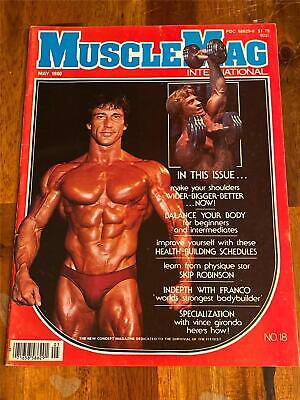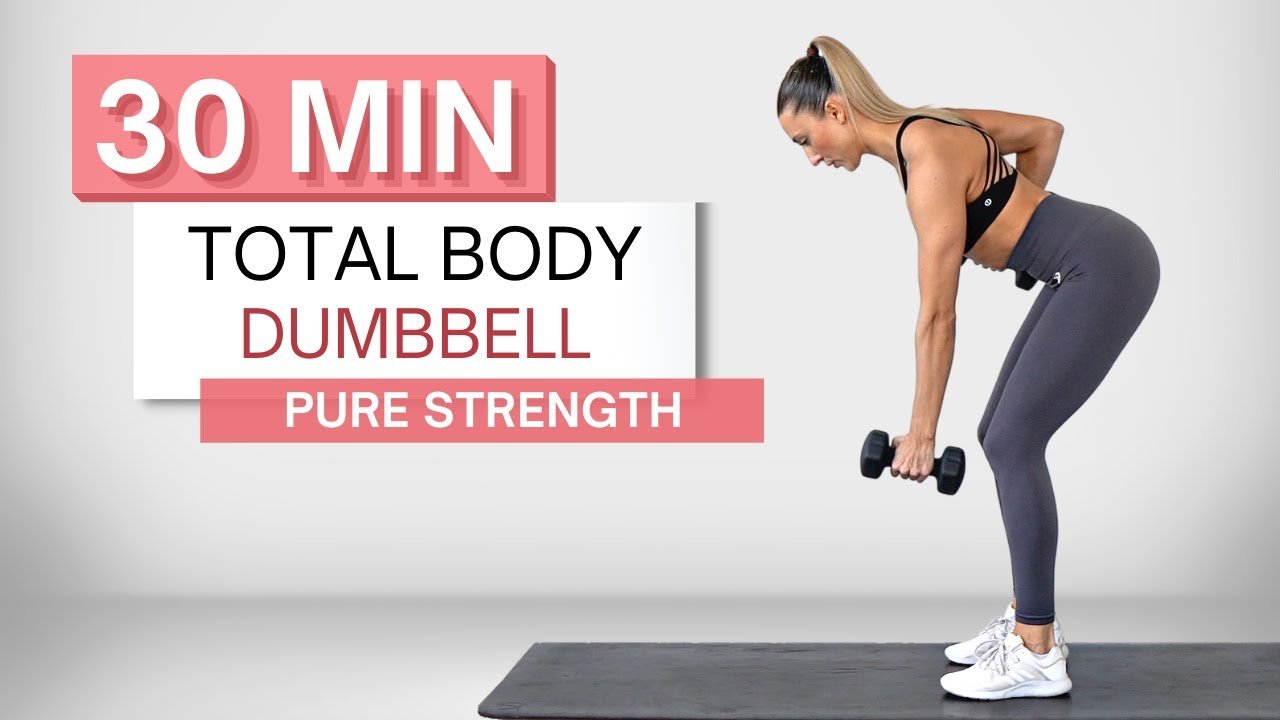Five effective ways to work out your shoulders include overhead presses, lateral raises, front raises, reverse flys, and shrugs. Utilize dumbbells, barbells, or resistance bands to target the deltoids, trapezius, and rotator cuff muscles.
Sculpting strong, well-defined shoulders is a common fitness goal that not only enhances your physical appearance but also boosts functional strength. Regular shoulder workouts contribute to better posture, improved performance in sports, and a reduced risk of injuries. Engaging in a diverse range of exercises ensures all parts of the shoulder muscles are challenged, resulting in balanced muscle growth and strength.
As you embark on these shoulder exercises, remember to maintain proper form to maximize benefits while minimizing the risk of strain or injury. Incorporate these five movements into your fitness routine for a comprehensive shoulder workout that caters to both beginners and seasoned gym-goers alike.

Credit: www.dmoose.com
Warm Up Those Deltoids
Warming up your deltoids is crucial before diving into a rigorous shoulder workout. A proper warm-up not only prepares your muscles for the activity ahead but also reduces the risk of injury. Your deltoids, being a significant muscle group in your shoulders, require attention to ensure they are ready for action. Let’s explore the importance of warming up and some dynamic stretches that can help maintain optimal shoulder health.
The Importance Of A Proper Warm-up
Initiating a workout with cold muscles can lead to strains or sprains. A well-executed warm-up increases blood flow, enhances muscle flexibility, and heightens joint mobility. It primes your shoulders for weightlifting, pressing, or any other shoulder-focused exercise.
Dynamic Stretches For Optimal Shoulder Health
Dynamic stretches involve active movements that help your shoulders reach a fuller range of motion. This type of stretching prepares the shoulders for the complex moves they will perform during the workout.
- Arm Circles: Extend your arms parallel to the ground and rotate them in small circles, gradually increasing the diameter.
- Shoulder Rolls: Roll your shoulders forward and backward in a circular motion to loosen the joints.
- Arm Swings: Swing your arms forward and backward, crossing them in front of your chest to warm up the deltoids.
- Tube Pull Aparts: Hold a resistance band or tube in front of you with both hands and pull the ends apart, stretching your shoulders.
- High Planks: Get into a plank position, and hold it for 30-60 seconds to activate your entire shoulder girdle.
Each dynamic stretch should be performed for 30 to 60 seconds to ensure that the shoulders are fully prepped.

Credit: www.today.com
Pressing Matters: The Shoulder Press
The shoulder press is a fundamental exercise for upper-body strength. Targeting the deltoids, triceps, and traps, shoulder presses offer tremendous benefits. Whether it’s for muscle growth, improved posture, or increased overall strength, including the shoulder press in your workout routine is essential.
Dumbbell Vs. Barbell Shoulder Press
The debate between using dumbbells and barbells for shoulder presses is ongoing. Both options have unique advantages. Dumbbells require more stability, engaging various muscles, while barbells allow for heavier lifting, promoting strength gains.
- Dumbbells: Encourage equal strength development and better range of motion.
- Barbells: Allow for a structured path and the ability to handle more weight.
Mastering The Technique
Maintaining proper form during the shoulder press is crucial. It ensures effectiveness and prevents injury. Focus on these key technique points:
- Stand with feet shoulder-width apart.
- Hold the weight at shoulder height, elbows bent.
- Press upwards until arms are fully extended.
- Lower back to the starting position with control.
For each rep, keep your core tight and your back straight. With consistent practice, your shoulder press form will improve, as will your shoulder strength and stability.
Raise The Bar With Lateral Raises
Welcome to the pivotal section of shoulder sculpting: Raise the Bar with Lateral Raises. This exercise targets the shoulders for a broader, more defined look. Master the art of precision with lateral raises and watch as those deltoids transform!
Isolating The Lateral Deltoids
The lateral deltoid muscle shapes the shoulder. Lateral raises target this specific area. Proper form is crucial. Stand straight, arms at your sides. Lift weights outward, keep arms slightly bent. Stop at shoulder level. The key is control. No swinging!
- Stand with feet shoulder-width apart.
- Keep core tight throughout the movement.
- Focus on using the shoulders, not momentum.
- Perform slow, steady lifts for maximum muscle engagement.
Variations For Intensity And Angle
Varying the exercise adjusts intensity and works different angles. Change up your routine for balanced development.
| Variation | Intensity | Angle |
|---|---|---|
| Seated Lateral Raise | Lower | Standard |
| Standing Lateral Raise | Higher | Standard |
| Incline Lateral Raise | Higher | Altered |
| Dumbbell Lateral Raise | Adjustable | Standard |
| Cable Lateral Raise | Stable | Diverse |
Experiment with weights and repetition ranges. Listen to your body’s cues. Embrace the burn for ultimate shoulder gains!
- Start light to prevent injury.
- Gradually increase weight to challenge your muscles.
- Maintain proper form for all variations.

Credit: www.ebay.com
Front Raises For Anterior Strength
Front raises are a stellar choice for bolstering shoulder strength, targeting the anterior deltoids with precision. Incorporating this exercise into a diverse shoulder regimen ensures comprehensive muscular development.
Front raises are a standout exercise for shoulder conditioning. They target the anterior deltoids, the muscles at the front of your shoulders. This exercise can also strengthen your upper chest and core muscles as they engage to stabilize your body.
- Lift light weights to start, progressing as you become stronger.
- Perform front raises with a steady, controlled motion to maximize muscle engagement.
- Keep your back straight and core tight during the exercise.
For front raises, stand with feet shoulder-width apart. Hold weights in front of your thighs. Keeping arms straight, raise the weights to shoulder height, then lower back down.
Balancing Your Shoulder Development
Shoulder development requires a balanced approach. Focus on exercises that work all parts of the shoulder. Combine front raises with lateral raises and reverse flyes. Together, they target the complete shoulder muscle group.
| Exercise | Target Muscle Group |
|---|---|
| Front Raises | Anterior Deltoids |
| Lateral Raises | Lateral Deltoids |
| Reverse Flyes | Posterior Deltoids |
Perform a mix of these exercises to achieve symmetrical strength and muscular development. Start with two sets of each exercise, working up to four sets as you get stronger.
Incorporating Resistance Bands
Resistance bands offer a versatile option for shoulder workouts. They provide variable resistance and can be easier on the joints compared to weights. Here’s how to use them for front raises:
- Step on the middle of the band with feet shoulder-width apart.
- Hold the ends of the band in each hand.
- Keep your arms straight, pull the band upward to shoulder height.
- Lower back down slowly.
With bands, you can perform front raises anywhere at any time. They are ideal for home workouts or while traveling. Start with a light band and shift to a heavier one as you get stronger.
The Power Of The Rear Delt Fly
The Power of the Rear Delt Fly often goes unnoticed in standard shoulder workouts. This exercise targets the posterior deltoids, a group of muscles critical for shoulder strength and stability. Including rear delt flies in your routine can transform your shoulder development and create a balanced, sculpted look.
Targeting The Forgotten Rear Delts
Most shoulder workouts focus on the front and side deltoids. Rear delt fly exercises focus on the back of the shoulder. These muscles help with posture and assist in pulling movements. Effective training of these muscles prevents muscle imbalances and potential injuries. The rear delt fly can be performed in various ways to isolate and strengthen this area.
Dumbbells Vs. Cable Flyes
Choosing between dumbbells and cable flyes for rear deltoids affects the tension and impact of the workout.
| Dumbbells | Cable Flyes |
|---|---|
| Provide a free range of motion. | Offer constant tension on the delts. |
| Great for home workouts. | Require gym equipment. |
| Improve stabilization and balance. | Allow for variations in angles. |
Both options are effective for shoulder development. Many prefer dumbbells for convenience and natural movement. Cable flyes are ideal for those needing controlled movement and continuous muscle tension.
- Dumbbells:
- Start with elbows slightly bent.
- Lift arms to shoulder level.
- Keep palms facing the ground.
- Cable Flyes:
- Adjust cables to low setting.
- Step forward in a staggered stance.
- Pull handles straight out to the sides.
Include both dumbbells and cable flyes in your routine for optimal shoulder development.
Rotator Cuff Care
Rotator Cuff Care is vital for shoulder health. These muscles and tendons keep your shoulder stable and allow you to move your arm. Ignoring them can lead to injury. Strengthening and maintaining flexibility in the rotator cuff is crucial for shoulder workouts.
Prevent Injury With Rotator Cuff Strengthening
Strong rotator cuff muscles mean less risk of injury. Focused exercises can help build these small, yet important muscles. Adding these to your routine protects your shoulders during heavy lifts and everyday movement.
- Internal Rotation: Use a resistance band for this movement.
- External Rotation: A band or light dumbbell works well.
- Lying Lateral Raise: Lay on one side and lift a light weight.
Exercises For Stability And Mobility
Stability and mobility exercises enhance rotator cuff functions. They improve your range of motion and prevent stiffness. Try incorporating the following exercises for a well-rounded shoulder routine.
- Shoulder Circles: Warm up your rotator cuffs with gentle circles.
- Cross-Body Stretch: Hold your arm across the body to stretch the cuff.
- Doorway Stretch: Press your hands on a door frame and step forward.
Frequently Asked Questions For Five Ways To Workout Your Shoulders
What Are The Five Best Shoulder Exercises?
The five best shoulder exercises are the overhead press, lateral raises, front raises, reverse flys, and the upright row.
How Can I Train My Shoulders?
To train shoulders, perform exercises like overhead presses, lateral raises, and reverse flys. Aim for 3 sets of 8-12 reps, incorporating variety and consistency in your workouts. Ensure proper form and use progressive overload for best results.
What Are 3 Way Shoulders?
Three-way shoulders are a shoulder exercise targeting different deltoid muscles. This routine involves lateral raises, front raises, and rear deltoid flys, often performed in a sequence.
What Is The Number 1 Shoulder Exercise?
The number 1 shoulder exercise is widely considered to be the overhead press. It effectively targets the deltoids and enhances shoulder strength and stability.
Conclusion
Strong shoulders are essential for daily activities and overall fitness. Our five shoulder workout techniques offer variety and effectiveness for all levels. Implement these exercises into your routine for improved strength and mobility. Remember, consistency is key to seeing results.
Happy lifting and towards healthier, more powerful shoulders!



